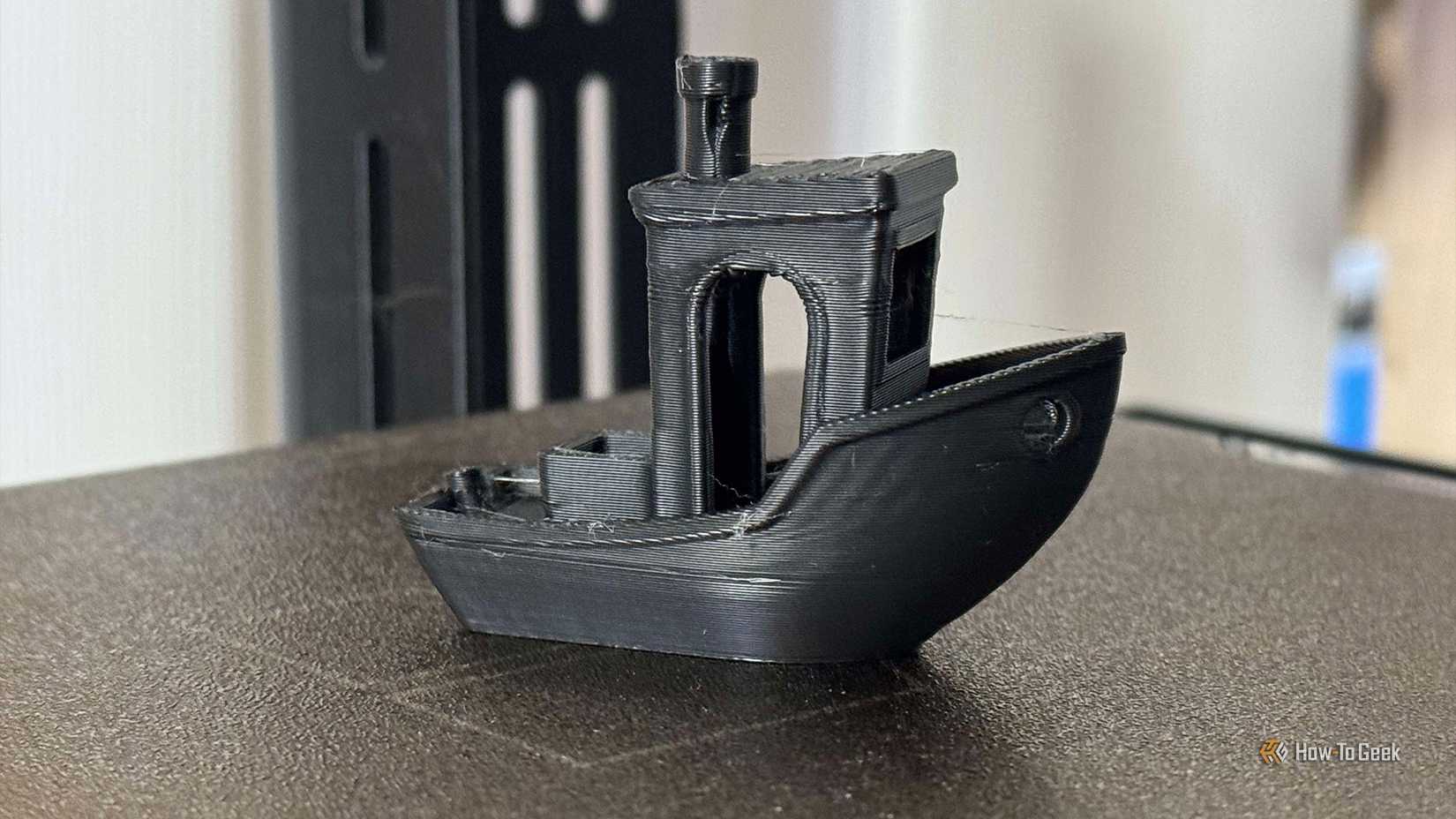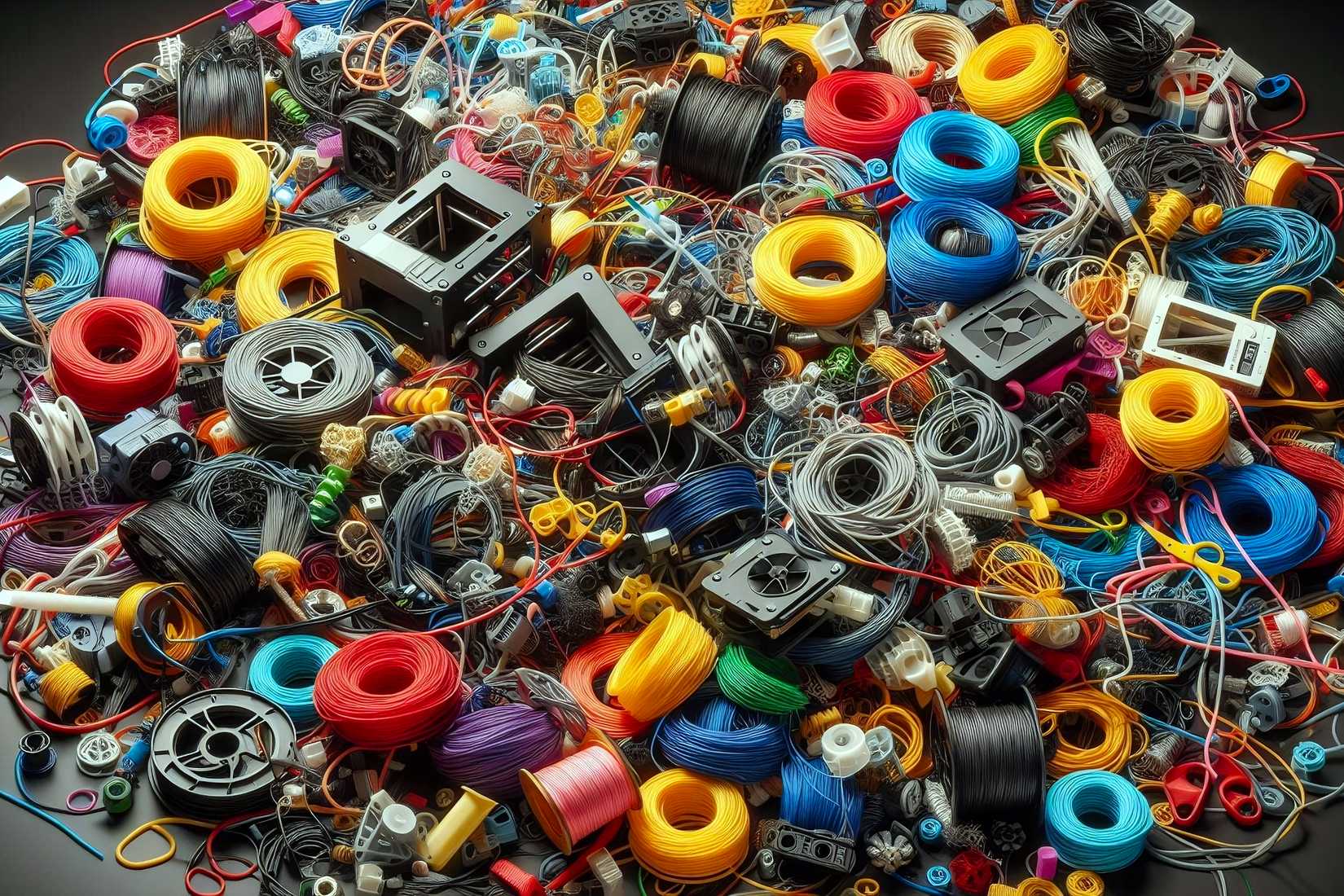3D printing is a hobby that quickly turns casual observers into enthusiasts. That means it’s easy to get caught up in the excitement and overlook the rougher edges, even if you’re completely taken in by it.
1
3D printing still isn’t as accessible as it could be
I was curious about 3D printing for many years before deciding to buy a printer. I’d have probably made the jump sooner if things felt a little more accessible, though I’ll concede that this is an argument you could make about many pastimes. Even with friends wooing me with their Bambu Labs A1s, I’d say 3D printing is still less accessible than other nerdy hobbies like PC building or photography.
Perhaps the biggest barrier to entry is the sheer volume of jargon you’ll encounter. There’s a whole glossary of 3D printing terms that you’ll come across, including abbreviations like FDM and FFF (both of which mean the same thing, which is to say melting filament so that it can be reshaped into 3D prints).
You’ll need to understand the different types of printers that are on the market, notably the difference between filament and resin printers, and then you’ve got to pick a model that fits your budget, space constraints, and desired use case. When you’re starting out, this can all feel very overwhelming.
Like any hobby, 3D printing isn’t for everyone, and that’s ok. Some people manage to find ways to use 3D prints all over their house, while others see their printer sitting unused for months on end without hobbies or interests that facilitate its use.
Like any hobby, the more you learn, the better you get. 3D printing is a lot like the aforementioned PC building and photography in that there are techniques to master and tricks to learn that will bring you greater success and deepen your understanding. These range from learning to build support structures to prevent your prints from warping, picking the right filament for the job, and basic maintenance.
2
3D prints can look bad, to outsiders
The majesty of being able to design and fabricate an item at home from a variety of materials is what draws people to the world of 3D printing. You can design your own items or piggyback the work of others and, in a few hours and for a few dollars’ worth of spaghetti or goop, have your own physical item at home. It’s amazing.
But in a world where we’re utterly spoiled by modern manufacturing processes like injection molding, which produce perfect items that we simply throw away after a couple of uses, 3D prints can look rough. This says more about broader manufacturing processes than 3D printing. The first time I saw an item produced on an FDR printer, my initial thought was “what’s with the lines?”
It’s unreasonable to expect a 3D printed item to be of the exact same quality as something that was produced using a completely different process and at far greater material cost. Given the opportunities that 3D printing unlocks, layer lines are easy to live with. Just don’t expect everyone to be blown away by the utility of the process on first glance.
3
There are health risks to be aware of
3D printers are relatively new inventions, which means there are no long-term studies looking at the health implications of spending lots of time around them. One thing that’s for sure is that resin 3D printers generally require more care and attention to operate safely compared with filament.
This includes the use of personal protective equipment (PPE) like gloves and respirators, adequate ventilation to prevent harmful gas buildup, the washing of prints in isopropyl alcohol and soapy water to remove excess print material, and prolonged exposure to UV rays to cure prints so that they can be safely handled.
There is also evidence to suggest that filament-based printers could pose health risks. These printers are known to produce ultrafine particles (UFPs) and volatile organic compounds (VOCs). Different filaments, such as ABS, may be more dangerous to work with than the ubiquitous “default” material, PLA. Filaments that require higher temperatures appear to produce more emissions.
Those concerned should consider enclosed printers that use filters, ensure that any print spaces are adequately ventilated, and ideally place printers away from living areas. FDR printers also use very hot nozzles to melt filament, so taking care to avoid burns by using gloves when handling parts is essential.
4
Improperly stored filament will ruin your prints
FDR printing involves melting filament and reshaping it layer by layer to print an item. This filament is hygroscopic, which means that it absorbs water from the environment. Storing your filament in a humid environment means that it will absorb a lot of water from the air.
For best results, your 3D printing filament should be stored in a dry environment with a humidity of 20% or less. Moisture is the enemy of a good 3D print, since filament that has too much water content can result in issues like stringing (where thin strands are drawn between two points), poor adhesion (where layers come apart), quality issues with the print surface, and increased risk of failed prints.
Throwing your 3D printer filament on an open shelf in your garage isn’t good enough unless you live in a desert. A moisture-controlled environment with a dehumidifier in it is best; alternatively, some sealed bins that are full of desiccant like silica gel should work on a budget.
For the absolute best results and especially in humid environments, investing in a filament dryer is a good idea. These are essentially small spool-shaped heaters that suck the moisture out of the print material. Some people even use plain old dehydrators for this.
5
3D printing can be wasteful
Failed prints are something you’re going to encounter from time to time. Once a print has failed, you’ll have little option but to throw it out and start again. Durability problems with the items you print can also lead to disappointingly short life spans, a problem that can be mitigated by picking the right material for the job (avoiding PLA if your item is going outside, for example).
Some printers allow you to print in multiple colors and materials using attachments like Bambu Lab’s AMS and Prusa’s MMU. In order to transition from one material to the next, the line must be cleared, which means wasting a small amount of filament between transitions. Thankfully, this problem is in the spotlight with Bambu Lab announcing the Vortek Hotend Change System for an upcoming printer, which should greatly cut down on waste and hopefully spark similar efforts from rivals.
Resin printing requires the use of solvents like isopropyl alcohol, and you’ll eventually need to evaporate the solvent in order to dispose of the leftover resin responsibly after printing. A failed resin print can require that you dispose of a whole “bath” of resin. Whether it’s resin or filament you’re printing, all of this material costs money.
There’s another side to the “waste” argument, which is that using a 3D printer to design something that solves a specific problem or print a part that extends the lifespan of an existing product is the opposite of wasteful. Just be aware that you’ll probably encounter plenty of failed prints and printer “poop” along the way.
None of this advice is designed to put anyone off buying a 3D printer, but rather serves as a heads-up to some of the problems newcomers and veterans alike should be aware of.




